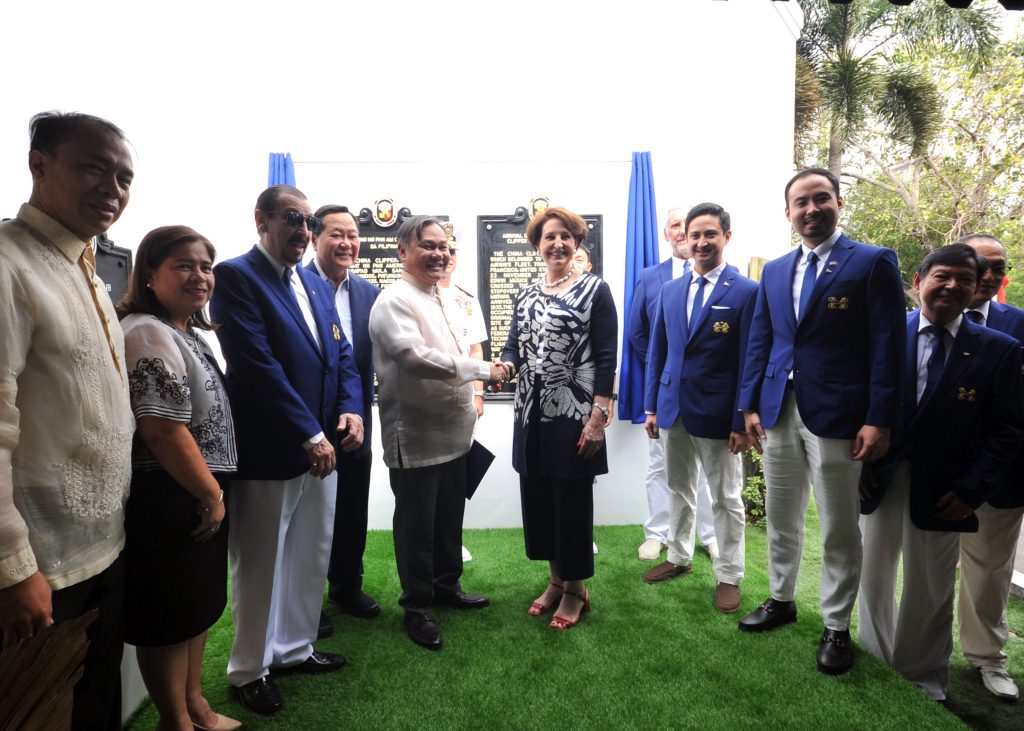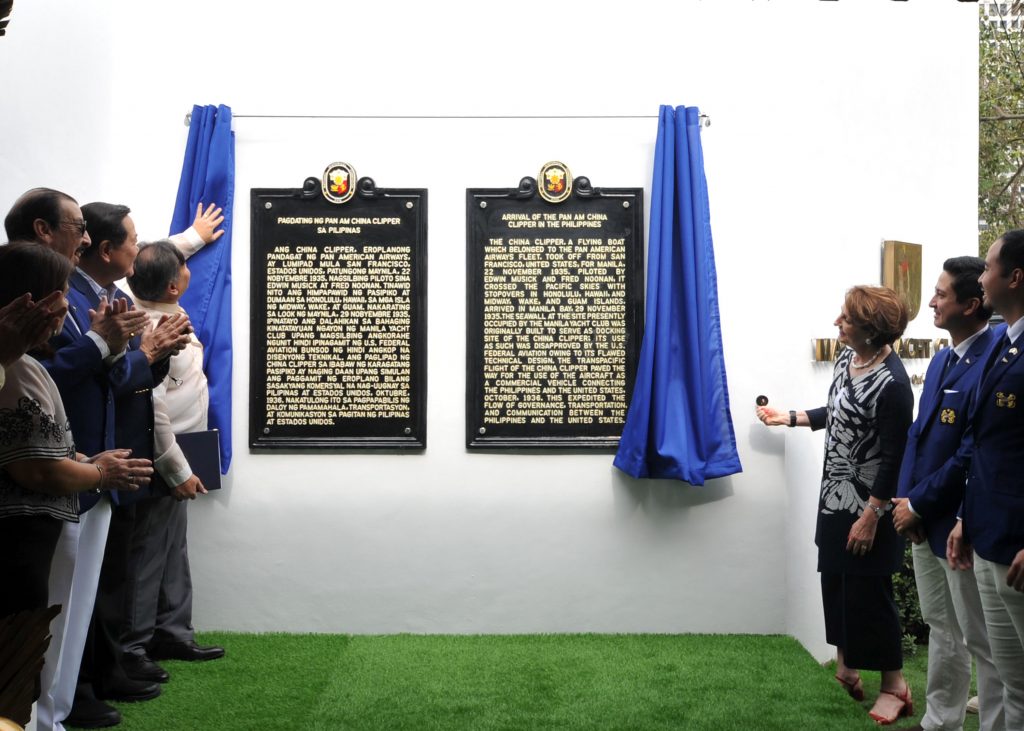MANILA — The National Historical Commission of the Philippines (NHCP) unveiled a historical marker on Saturday (20 Jan 2024) at the Manila Yacht Club (MYC) on Roxas Boulevard of the first commercial plane flight connecting the United States and the Philippines.
This historic event, dating back to 1935, played a pivotal role in opening the country to international routes.
In attendance for the unveiling were US Ambassador MaryKay L. Carson, Dr. Emmanuel Franco Calairo, Chairman of NHCP, Past Commodore Ikdefonso Tronqued and Commodore Ildefonso Marco Tronqued of the Manila Yacht Club, former SC Justice Antonio Carpio, and other esteemed naval officials.
The historical marker outlines the significant journey of the China Clipper, a flying boat from the Pan American Airways fleet. Piloted by Edwin Musick and Fred Noonan, it departed from San Francisco, USA, on November 22, 1935.
The transpacific flight included stopovers in Honolulu, Hawaii, ultimately reaching Manila Bay on November 29, 1935. The seawall at the current site of the Manila Yacht Club originally served as the docking site for the China Clipper, approved by the US Federal Aviation despite its flawed technical design.
Commodore Tronqued, in his speech, highlighted that the first flight of the Pan Am China Clipper carried 11,985 letters as cargo, symbolizing the initiation of commercial flights and the subsequent opening of more routes in Asia.
US Ambassador MaryKay Clarson expressed pleasure in joining the NHCP and the Manila Yacht Club in commemorating the arrival of the China Clipper. She described it as a milestone in the history of aviation and US-Philippines relations.
She recalled a significant moment from President Marcos’ official trip to Washington DC last year, where both presidents agreed to expand air connectivity and modernize bilateral aviation relationships.
Ambassador Clarson emphasized the importance of updating a 40-year-old bilateral agreement and mentioned her discovery of two American companies manufacturing aviation components in Baguio and Laguna, contributing significantly to the partnership between the US and the Philippines and enhancing the prosperity of both nations.
Clarson concluded, “This is the kind of momentum we need to further modernize our aviation ties.”


(el Amigo/MNM)
